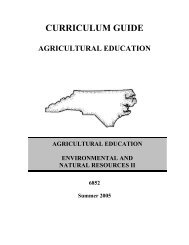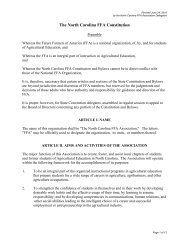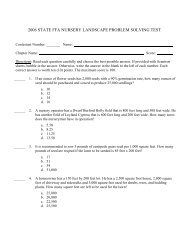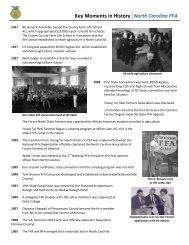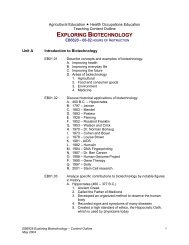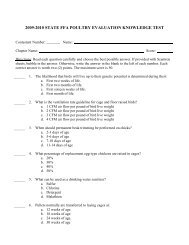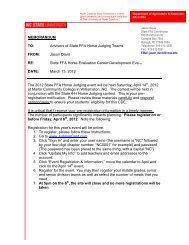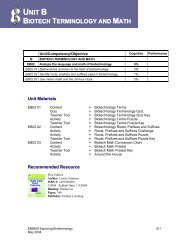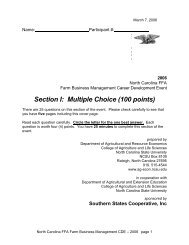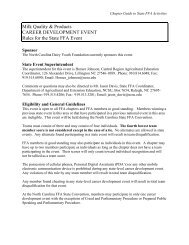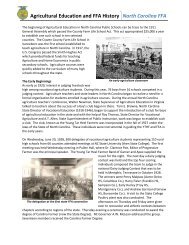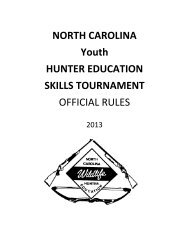Create successful ePaper yourself
Turn your PDF publications into a flip-book with our unique Google optimized e-Paper software.
COURSE:UNIT D:EQUINE SCIE<strong>NC</strong>E IHORSES IN A SAFE EQUINE ENTERPRISECOMPETE<strong>NC</strong>Y: ES10.00 Explain factors influencing equine behavior.OBJECTIVE ES10.01 Explain the senses that affect equine behavior.A. Senses Used by the Horse Equine Science, 2 nd Edition,pp. 489–492; HIH 1220 p. 1-21. Vision – It is very important to understand how vision influences a horse’sactions. The vision for a horse is special in that they have both monocular visionand binocular vision which works well for grazing and watching for predatorscoming from either side, but poorly for judging height and distance.a. Monocular vision means the horse can see separate scenes with each eyeand thus a grazing horse can see almost all the way around its body.1. Horses see up to 270 degrees without turning their heads.2. A horse is good at detecting movement, but has a hard time focusingclearly on objects.b. Horses are like people in that they can also see the same scene with botheyes (binocular vision).1. The horse’s binocular vision is not as good as their monocular visionand is used to judge distances in front of the horse.2. Horses can not see with binocular vision objects that are closer than4 feet.3. For the most part, horses see poorly and require special considerations.a. Horses adjust their range of vision by raising their head to seeobjects that are close or by lowering their head to see objects thatare at a distance.b. Horses have two blind spots – one directly below its head and theother directly behind its hindquarters.Summer 2003446825 Equine Science I



